For millions around the world, coffee isn’t just a beverage; it’s a ritual, a source of comfort, and a fuel for creativity. But what constitutes the “best” coffee? It’s a subjective question with an answer as diverse as the coffee beans themselves. This journey will delve into the world of coffee, exploring everything from bean varieties and roast levels to brewing techniques and the pursuit of that perfect cup.
- Decoding the Bean: Arabica vs. Robusta and the Art of Roasting
- Mastering the Brew: From Espresso to Cold Brew
- The Science of Extraction: Achieving the Perfect Balance
- Elevating Your Coffee Experience: Tools and Techniques
- Beyond the Cup: Sustainability and the Future of Coffee
- Conclusion: The Pursuit of Your Perfect Cup
- Unlock Your Inner Coffee Connoisseur
Decoding the Bean: Arabica vs. Robusta and the Art of Roasting

The foundation of any great cup of coffee lies in the bean itself. Two dominant species, Arabica and Robusta, shape the coffee landscape. Arabica, comprising roughly 60% of global production, is prized for its smooth, nuanced flavors and lower caffeine content. Its complex profiles, ranging from bright citrus notes to chocolatey richness, make it a favorite among specialty coffee enthusiasts. Robusta, on the other hand, boasts a higher caffeine content and a bolder, more bitter taste, often finding its way into espresso blends to contribute a thick, creamy crema.
“The art of coffee lies in understanding the bean: Arabica’s elegance, Robusta’s boldness, and the roast that unlocks their soul.”
– James Hoffmann, World Barista Champion & Coffee Expert
Once harvested, the green coffee beans undergo a transformative process known as roasting. This crucial step unlocks the bean’s hidden potential, developing its characteristic flavors and aromas. Light roasts preserve the origin characteristics of the bean, showcasing bright acidity and delicate nuances. Medium roasts offer a balanced profile, harmonizing acidity, body, and sweetness. Dark roasts, taken to the edge of caramelization, deliver bold, smoky, and often bittersweet notes. Understanding these variations is key to selecting the right beans for your preferred flavor profile.
Practical Tip: Experiment with different roast levels from various origins to discover your personal preference. Start with a medium roast and explore lighter or darker options to refine your palate.
Roast Development & Maillard Reaction
The roasting process significantly impacts the final cup’s flavor profile, primarily due to the Maillard reaction and caramelization. The Maillard reaction, a complex series of chemical reactions between amino acids and reducing sugars, begins around 230°F (110°C) and is responsible for the development of hundreds of volatile compounds that contribute to aroma and flavor. These reactions are influenced by factors such as bean moisture content, roasting temperature, and airflow within the roaster. Different roasting machines, like fluid bed roasters or drum roasters, affect the evenness of heat transfer, impacting the uniformity of the Maillard reaction throughout the bean batch. Precise control over these variables is crucial for achieving consistent results.
- Caramelization of sugars also contributes significantly to roasted coffee’s flavor, occurring alongside the Maillard reaction at higher temperatures.
- The rate of the Maillard reaction is influenced by pH; a lower pH generally leads to faster browning.
- Different roast levels (light, medium, dark) exhibit distinct Maillard reaction profiles, resulting in varied flavor characteristics.
- Pyrolysis, the breakdown of organic matter at high temperatures, starts to become significant in darker roasts, creating smoky and bitter notes.
- Proper bean origin selection plays a role; beans with differing amino acid and sugar compositions will react differently during roasting.
| Bean Type | Flavor Profile | Caffeine Content | Common Use |
|---|---|---|---|
| Arabica | Smooth, nuanced, bright citrus to chocolatey richness | Lower | Specialty coffee |
| Robusta | Bold, bitter, thick crema | Higher | Espresso blends |
Mastering the Brew: From Espresso to Cold Brew
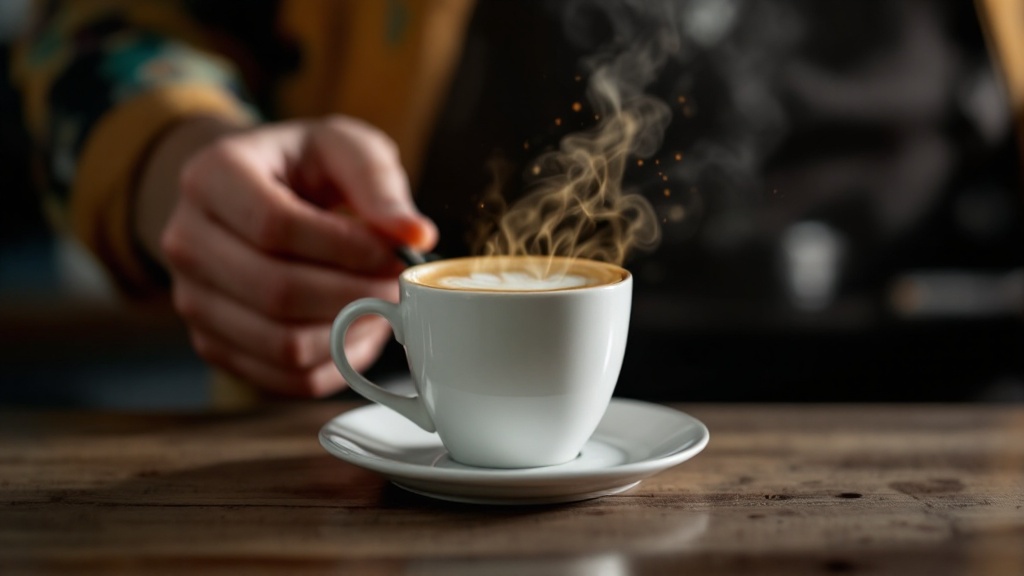
With the right beans in hand, the next step is mastering the art of brewing. From the intense pressure of espresso to the slow, immersive steep of cold brew, each method extracts the coffee’s essence in a unique way. Espresso, the foundation for lattes and cappuccinos, requires specialized equipment and precise technique to produce a concentrated shot of coffee topped with a rich crema. Pour-over methods, like the V60 or Chemex, offer a more hands-on approach, allowing for control over bloom, pour rate, and extraction time, resulting in a clean, nuanced cup. The French press, with its simple immersion brewing, delivers a full-bodied, sediment-rich coffee experience.
“Mastering coffee brewing lies in understanding the interplay of grind size, water temperature, and time–each method a unique dance of precision and patience.”
– James Hoffmann, World Barista Champion & Coffee Expert
Cold brew, a rising star in the coffee world, involves steeping coarsely ground coffee in cold water for 12-24 hours. This method yields a smooth, low-acid concentrate that can be diluted with water or milk, offering a refreshing alternative to traditional hot brewing. Each method requires specific grind sizes, water temperatures, and brew times to achieve optimal extraction and flavor. Understanding these variables is paramount to brewing exceptional coffee.
Practical Tip: Start with a simple brewing method like the French press or pour-over. Focus on consistency in grind size, water temperature (ideally between 195°F-205°F / 90°C-96°C), and brew time to achieve repeatable results.
Optimal Coffee Extraction: Grind Size
Achieving optimal coffee extraction hinges critically on selecting the appropriate grind size for the chosen brewing method. Grind size directly impacts the surface area of the coffee grounds exposed to the water, influencing extraction rate and ultimately, the final cup’s flavor profile. Too fine a grind results in over-extraction, leading to bitterness and a burnt taste due to prolonged contact with water, extracting undesirable compounds. Conversely, too coarse a grind leads to under-extraction, producing a weak, sour, and underdeveloped cup as insufficient surface area limits water’s interaction with the coffee grounds. The optimal grind size varies considerably depending on the brewing method.
- Espresso requires a very fine grind, maximizing surface area for quick extraction under high pressure.
- Drip coffee generally uses a medium grind, balancing extraction time and flavor complexity.
- French press calls for a coarse grind to prevent over-extraction during the longer brewing time.
- Using a burr grinder ensures consistent particle size, crucial for even extraction.
- Adjust grind size based on your specific beans; older beans may require a slightly coarser grind.
The Science of Extraction: Achieving the Perfect Balance
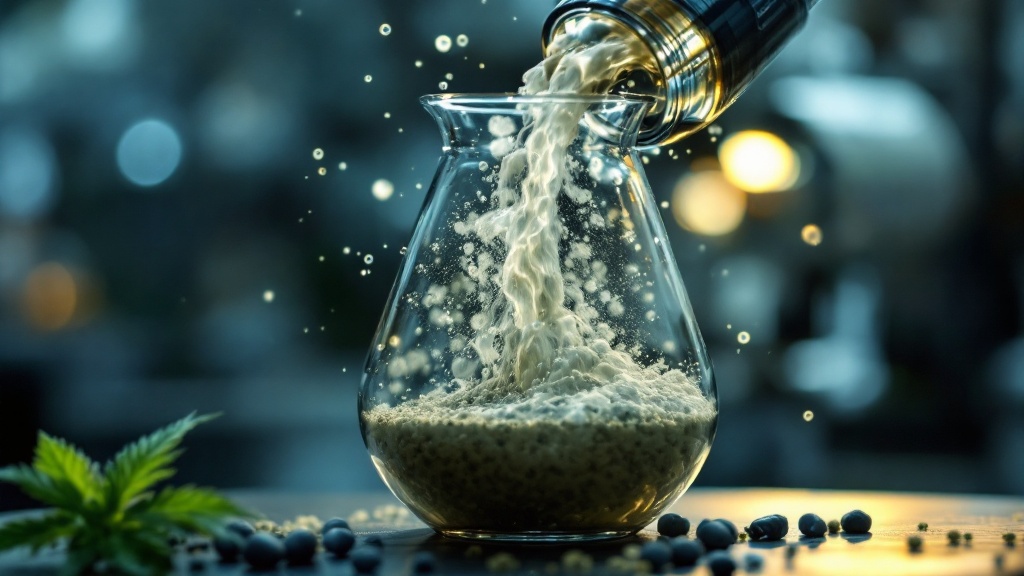
Brewing coffee is a delicate dance between science and art. The goal is to extract the desirable compounds from the coffee grounds while avoiding over- or under-extraction. Over-extraction, often caused by too fine a grind or excessive brew time, results in a bitter, unpleasant cup. Conversely, under-extraction, stemming from too coarse a grind or insufficient brew time, leads to a sour, underdeveloped flavor profile. Achieving the “sweet spot” of extraction requires careful attention to grind size, water temperature, and brew ratio (typically 1:16, coffee to water).
The bloom phase, particularly important in pour-over methods, involves pouring a small amount of hot water over the grounds and allowing them to release trapped CO2 for 30-45 seconds. This crucial step prepares the grounds for even extraction and enhances the overall flavor. Consistency in grind size, achieved using a burr grinder, is paramount for uniform extraction and a balanced cup. Investing in a quality grinder is one of the most significant upgrades a coffee enthusiast can make.
Practical Tip: Use a coffee scale to measure both coffee grounds and water for consistent brewing. Keep a coffee journal to track your brewing parameters and the resulting flavor profiles, allowing you to refine your technique over time.
Optimal Coffee Extraction Yield
Achieving optimal coffee extraction yield hinges on a precise understanding and control of several key parameters. The primary factor is the mass transfer rate of soluble compounds from the coffee grounds into the brewing water. This rate is directly influenced by the surface area of the ground coffee, which is determined by particle size distribution. A burr grinder, preferred over blade grinders due to its consistent particle size production, is crucial for maximizing extraction efficiency. A finer grind size increases surface area, facilitating faster extraction, while a coarser grind results in lower surface area and slower extraction. However, excessively fine grinds can lead to over-extraction and channeling, where water flows preferentially through certain pathways, resulting in uneven extraction and undesirable bitter notes. Conversely, overly coarse grinders result in under-extraction, yielding a sour, weak brew.
- Target a grind size specific to your brewing method; espresso requires a much finer grind than French press.
- Water temperature significantly impacts extraction; ideal range is generally between 195-205°F (90-96°C).
- Coffee-to-water ratio is crucial; a higher ratio generally leads to a stronger, more concentrated brew.
- Brew time directly correlates with extraction; longer brew times generally extract more, but risk over-extraction.
- Using fresh, high-quality beans is paramount for optimal flavor and extraction yield.
Elevating Your Coffee Experience: Tools and Techniques
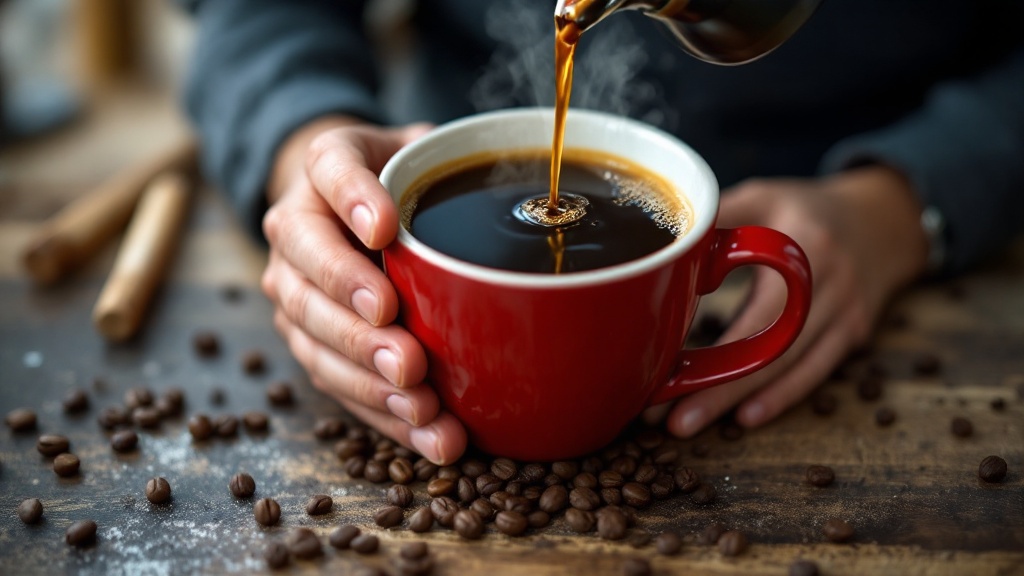
Beyond the basics of brewing, there are numerous tools and techniques to elevate your coffee experience. A burr grinder, as mentioned earlier, is essential for consistent grind size. A gooseneck kettle provides precise control over water flow during pour-over brewing, ensuring even saturation of the grounds. A digital scale allows for accurate measurement of coffee and water, ensuring repeatable results. Investing in these tools will empower you to take control of your brewing process and unlock the full potential of your coffee beans.
And get this, exploring advanced techniques like pre-infusion, pulse pouring, and agitation can further refine your brewing skills. Pre-infusion involves saturating the grounds with a small amount of water before the main brew, promoting even extraction. Pulse pouring, a technique used in pour-over brewing, involves pouring water in short bursts, optimizing the flow and extraction. Agitation, gently stirring the coffee slurry during brewing, can help ensure even extraction and prevent channeling.
Practical Tip: Research and experiment with different brewing techniques to find what works best for you and your preferred brewing method. Online resources like Barista Hustle and the Specialty Coffee Association (SCA) offer valuable insights and tutorials.
Pour-Over Pulse Pouring Analysis
Pulse pouring, a key technique in pour-over brewing, significantly impacts extraction uniformity and overall cup quality. Unlike a continuous pour, pulse pouring involves delivering water in short, controlled bursts, allowing for even saturation of the coffee grounds and minimizing channeling. The optimal pulse duration and volume depend on several factors including the grind size, coffee-to-water ratio, and the specific filter used. For instance, a coarser grind will generally require longer pulses to avoid premature draining, while a finer grind may necessitate shorter, more frequent pulses to prevent over-extraction. The Hario V60, a popular pour-over brewer, benefits greatly from this technique due to its single hole design, which can be prone to channeling if not handled correctly. Effective pulse pouring involves a gentle, circular pouring motion that starts in the center of the coffee bed, slowly expanding outwards to ensure the entire surface area is uniformly saturated.
- Ideal pulse volume typically ranges from 25-50g, adjusted based on the total water volume.
- The “bloom” is a crucial initial pulse, saturating grounds before the main pour.
- Observation is key; look for even saturation and drainage speed to adjust pulse length.
- Experimentation is essential; different beans and roasts react uniquely to pulse pouring.
- Advanced techniques involve varying pulse size and speed for nuanced extraction.
- Using a gooseneck kettle provides better control over water flow and pulse consistency.
Beyond the Cup: Sustainability and the Future of Coffee
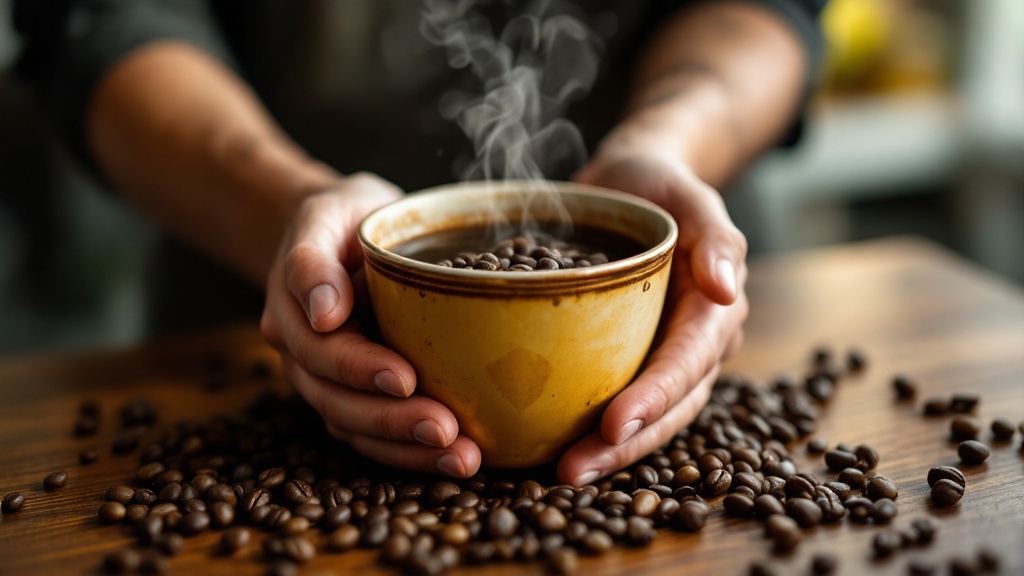
As our appreciation for quality coffee grows, so too should our awareness of its environmental and social impact. Choosing sustainably sourced coffee, often labeled as shade-grown or Fair Trade certified, supports biodiversity, protects ecosystems, and ensures fair wages for coffee farmers. By supporting roasters and brands committed to ethical sourcing and transparency, we can contribute to a more sustainable future for the coffee industry.
Exploring the world of coffee can extend beyond the cup itself. Coffee tourism offers the opportunity to visit coffee-growing regions, learn about cultivation and processing firsthand, and connect with the communities that produce our beloved beverage. From bean to cup, coffee represents a complex tapestry of flavors, cultures, and economies. By engaging with the broader context of coffee production, we can deepen our appreciation for this remarkable beverage.
Practical Tip: Look for certifications like Fair Trade, Rainforest Alliance, and Bird Friendly when purchasing coffee to support sustainable practices. Consider buying directly from roasters who prioritize ethical sourcing and transparency.
Shade-Grown Coffee Cultivation
Shade-grown coffee cultivation, in contrast to sun-grown methods, involves the strategic integration of shade trees within coffee plantations. This technique significantly impacts the coffee plant’s physiological responses and the overall ecosystem health. The canopy created by shade trees moderates temperature fluctuations, reducing stress on coffee plants and decreasing the need for irrigation, thereby conserving water resources. Furthermore, the shade reduces evaporation rates from the soil, maintaining soil moisture content and minimizing erosion. The selection of appropriate shade tree species is crucial; considerations include growth habit, shade density, nitrogen-fixing capabilities, and potential for intercropping. Fast-growing nitrogen-fixing trees like <i>Inga</i> species are frequently employed, enriching the soil with nitrogen and improving its fertility.
- Supports biodiversity by providing habitat for birds, insects, and other wildlife.
- Reduces the need for chemical pesticides and fertilizers, promoting organic farming.
- Improves coffee bean quality, often resulting in a richer, more complex flavor profile.
- Provides additional income streams through the harvesting of shade tree products (e.g., fruits, timber).
- Contributes to carbon sequestration, helping to mitigate climate change.
Conclusion: The Pursuit of Your Perfect Cup

The quest for the “best” coffee is a personal journey of exploration and discovery. There is no single definitive answer, as taste preferences, brewing methods, and bean selections vary widely. By understanding the fundamental principles of coffee, experimenting with different brewing techniques, and appreciating the nuances of flavor, you can embark on your own unique coffee adventure. From the moment the beans are harvested to the final sip, coffee offers a rich and rewarding experience for those willing to delve into its depths. So, grind those beans, heat that water, and embark on your own pursuit of the perfect cup.
Optimal Water Extraction Ratio
Achieving the perfect cup hinges critically on the precise water-to-coffee ratio employed during brewing. This ratio, often expressed as grams of water per gram of coffee (g/g), directly impacts the extraction yield and, consequently, the final cup’s flavor profile. An under-extracted brew will taste sour and weak, indicating insufficient dissolution of soluble coffee compounds. Conversely, over-extraction leads to a bitter, astringent taste, resulting from the extraction of undesirable compounds. The ideal range generally lies between 1:15 and 1:18 g/g, although this can vary based on bean origin, roast level, and desired strength.
- A lower ratio (e.g., 1:15) yields a stronger, more concentrated brew.
- A higher ratio (e.g., 1:18) results in a weaker, milder cup.
- Freshly roasted beans generally require a slightly higher ratio than older beans.
- Darker roasts often extract more easily and may benefit from a slightly higher ratio.
- Experimentation is key to finding your ideal ratio for specific beans and brewing methods.
- Using a scale ensures accuracy and consistency in achieving the desired ratio.
Unlock Your Inner Coffee Connoisseur
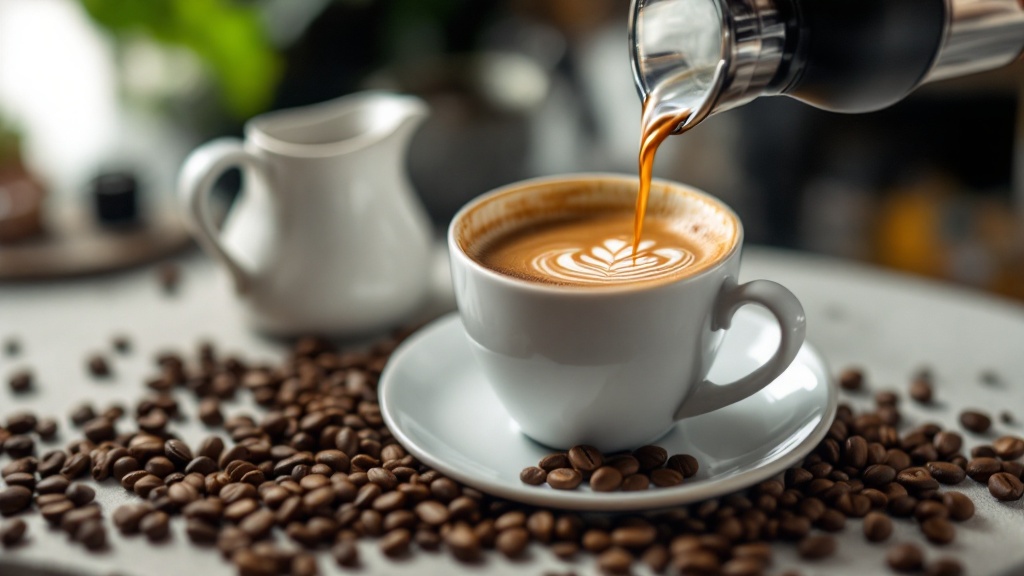
From the subtle floral notes of a lightly roasted Ethiopian Yirgacheffe to the rich, chocolatey depths of a Sumatran Mandheling, the world of coffee offers an endless tapestry of flavors waiting to be explored. By understanding the nuances of bean variety, roast level, and brewing method, you hold the key to unlocking a truly exceptional coffee experience. Remember, the “best” coffee isn’t a universal standard; it’s the one that perfectly aligns with your individual palate.
This journey through the coffee landscape has equipped you with the knowledge to navigate the vast spectrum of options, from selecting the perfect beans to mastering your chosen brewing technique. Don’t be afraid to experiment, to push the boundaries of your coffee comfort zone, and to discover new depths of flavor. Each cup presents an opportunity to refine your palate and deepen your appreciation for this beloved beverage.
So, embrace the art of coffee. Seek out new origins, experiment with different roast profiles, and refine your brewing technique. The perfect cup isn’t a destination; it’s a journey of discovery. Start brewing and awaken your senses to the extraordinary world of coffee that awaits.
Roast Level Impact on Coffee Flavor
The degree of roasting significantly impacts the final cup’s flavor profile. Roasting transforms the green coffee bean’s chemical composition, affecting acidity, body, and the development of characteristic flavor notes. Generally, lighter roasts retain more of the bean’s origin-specific characteristics, showcasing nuanced acidity and brighter, fruitier, or floral notes. For example, a light roast Ethiopian Yirgacheffe will exhibit distinct floral aromas and a citrusy acidity, whereas a dark roast of the same bean might mask these delicate nuances with more prominent bittersweet and smoky flavors. The Maillard reaction, a key chemical process during roasting, is responsible for the development of many desirable flavor compounds at lower temperatures, while higher temperatures lead to caramelization and pyrolysis, impacting the overall flavor profile. Over-roasting can lead to bitter, ashy, or burnt flavors, negating the bean’s potential.
- Lighter roasts emphasize origin-specific characteristics like acidity and floral notes, while darker roasts produce bolder, often smoky or chocolatey flavors.
- The Maillard reaction, prominent in medium roasts, creates complex flavor compounds, whereas caramelization and pyrolysis dominate darker roasts.
- Acidity generally decreases as roast level increases; lighter roasts are typically brighter and more acidic.
- Body, or mouthfeel, tends to increase with darker roasts, becoming fuller and heavier.
- Choosing the right roast level depends on personal preference and the bean’s origin; some beans are better suited to lighter roasts to highlight their nuanced flavors.
- Over-roasting leads to the loss of desirable flavors and results in unpleasant bitter, acrid, or burnt notes.
| Roast Level | Flavor Profile | Acidity | Body |
|---|---|---|---|
| Light Roast | Bright, fruity, floral | High | Lighter |
| Medium Roast | Complex, balanced | Moderate | Medium |
| Dark Roast | Bold, smoky, chocolatey | Low | Fuller, heavier |

